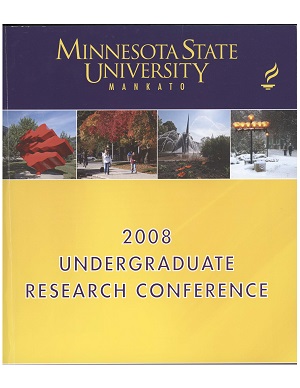Cortical Evidence of Misperception
Location
CSU 202
Start Date
22-4-2008 8:30 AM
End Date
22-4-2008 10:30 AM
Student's Major
Psychology
Student's College
Social and Behavioral Sciences
Mentor's Name
Jonathan Page
Mentor's Department
Psychology
Mentor's College
Social and Behavioral Sciences
Description
A recognition response is an experimentally observable change in cortical electrical activity that is present when an individual recognizes a specific stimulus. This quality makes it possible to observe if behavioral mistakes in stimulus recognition could be attributed to base level errors in cortical processing. There are many applications for such a correlation, including its relevance to public policy. Specifically, it may help determine the extent to which an individual could be held legally liable for perceptual mistakes. Participants were shown three series of increasingly complex circular images in a relatively rapid sequence and asked to strike corresponding keys on a computer keyboard for specific patterns. Cortical activity, recorded using electroencephalography (EEG), was measured and compared to behavioral responses observed during these tasks. By observing brain activity related to the behavioral errors, it was possible to observe cortical misperceptions at early processing stages. This would suggest that processing errors during the early computational stages of building an internal representation may influence behavioral responses when a 'snap' judgment is required.
Cortical Evidence of Misperception
CSU 202
A recognition response is an experimentally observable change in cortical electrical activity that is present when an individual recognizes a specific stimulus. This quality makes it possible to observe if behavioral mistakes in stimulus recognition could be attributed to base level errors in cortical processing. There are many applications for such a correlation, including its relevance to public policy. Specifically, it may help determine the extent to which an individual could be held legally liable for perceptual mistakes. Participants were shown three series of increasingly complex circular images in a relatively rapid sequence and asked to strike corresponding keys on a computer keyboard for specific patterns. Cortical activity, recorded using electroencephalography (EEG), was measured and compared to behavioral responses observed during these tasks. By observing brain activity related to the behavioral errors, it was possible to observe cortical misperceptions at early processing stages. This would suggest that processing errors during the early computational stages of building an internal representation may influence behavioral responses when a 'snap' judgment is required.
Recommended Citation
Hickman, Samuel. "Cortical Evidence of Misperception." Undergraduate Research Symposium, Mankato, MN, April 22, 2008.
https://cornerstone.lib.mnsu.edu/urs/2008/oral-session-09/8



